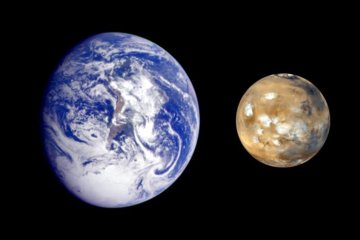Making small planetesimals during the formation era of the solar system
Numerical simulations to explore how minor bodies like asteroids, comets and KBOs formed
The solar system was formed 4.6 billion years ago out of a collapsing cloud of gas and dust. The formation era lasted of the order of a few ten million years. The initial pathway from gas and dust towards meter size bodies is understood, and reasonable scenarios with convincing modelling results also exists for the large entities in the solar system, i.e. the Sun, the planets, and bodies of the dwarf planet category and sizes of several 100km. A category of bodies, large in number, but small in size, i.e. asteroids, comets, and Kuiper Belt objects (KBOs), still awaits a convincing concept how they can be created in the context of the solar system formation process.
The PhD thesis shall explore by numerical simulations, using existing and significantly updated formation model codes, whether and how minor bodies like asteroid, comet and KBOs can be formed in the respective distance range from the Sun, overcoming the meter aggretion barrier in the dense and cold environment of the gaseous and dusty formation disk of the planetary system. Constraining environmental formation conditions as well as object information are to be considered, and new results from space missions to minor bodies have to be evaluated on the background of simulation results (for instance the layering and rather homogenuous and likely fragile interior constitution, found in the nucleus of comet 67P/Churyumov-Gerasimenko).
The PhD thesis project is embedded in a collaboration with Prof. Hubert Klahr from the Max-Planck Institute for Astronmy (MPIA) in Heidelberg, Germany, and receives partial funding from a MPS in-house research project.











